Here is the Volume 9 of American Football from When you watch something, visit us first! Mr. Yorihisa SEKIGUCHI, former Head Coach of the “ThreeNailsCrowns “, the American Football team of J.F.Oberlin University told us about how coaches of American Football on Sideline think. This is the combined version of Part 9-1, 2 and 3 on our YouTube channel.
In the American Football Vol.8, we learned about the Reaction by Offense (OF) of American Football.
Mr. Yorihisa SEKIGUCHI, former Head Coach of “Three Nails Crowns,” the American Football team of J. F. Oberlin University, told us again about how coaches on Sideline think.
.png)
Part 9-1: Game Plan
Now, about the Game plan that Coaches prepare before the game. For example, if talking about Offensive (OF) Coaches, they basically take statistics on the plays that the opposing team has made in previous games, and based on those statistics, they seek situations in which they can play to their advantage.
Or, when OF Coach finds a trend that if OF players in this formation, the opponent is clearly lacking in their players on the Weak side, he will construct a Game plan to attack for this side thoroughly.
*Weak side: The side that is near from the ball to the sideline.
Also, the superiority of Offensive Linemen (OL) versus Defensive Linemen (DL) is quite important. For example, if this OL can always defeat this DL player, the first thing for OF is to decide to make a Run play running behind this Guard (G) player on 3rd down short.
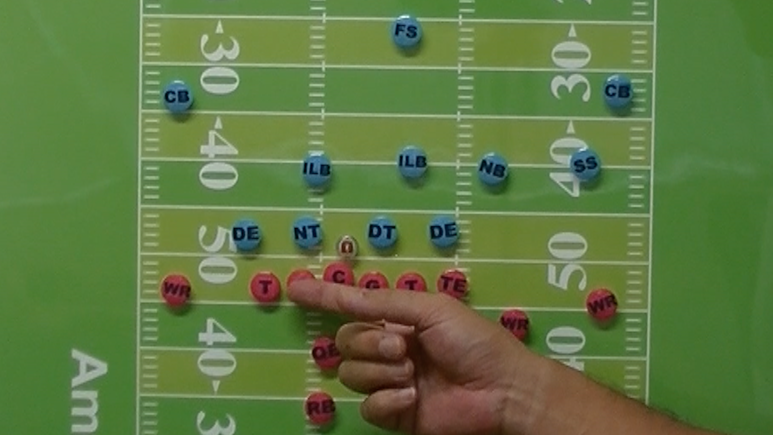
However, if OF uses this Run play every time, gradually DF players will come to this side and this play will become ineffective, so then OF will use that Run play only on 3rd down short. Other times, OF would basically choose Run plays to the outside, and only use Run play here when the situation is really important.
So I think the Game plan is to decide in advance where to create and use situations that will give OF an advantage. So, for example, OF Coaches are always watching the tendencies of the opposing DF and thinking about what plays they can make to get an advantage in that situation.
Also, OF coaches are watching to see in which situations the opponent’s DF allows OF long gains or in which situations they allow OF to get Touchdowns (TDs), and there must be a reason why this DF is weak or failing. For example, they would be able to find this DF, by tendency, is weak against this type of play. This DF is vulnerable to a slightly late timing play. Then, OF will choose a Draw play, and so on.
*Draw (play): To make a Run play after faking a Pass.
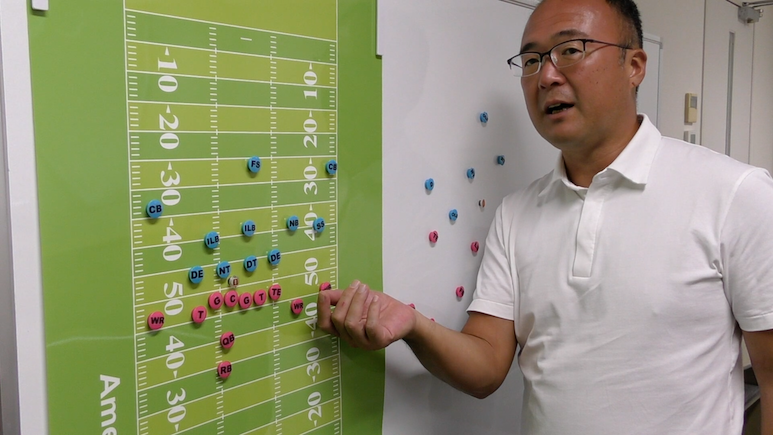
Taking into account that DF is more likely to make certain mistakes in certain situations, for example, mistakes in exchanging the cover are more likely to occur, OF dares to create such situations. The same mistakes often appear in the same situations. I think the point is how to create situations that give an advantage to their team and when to bring it.
That is the Game plan, and then what Coaches make something called a “Script.” OF coaches decide before the game what plays they will do for the first 10 or 12 plays, and during these plays, they check to see if OF is in this formation, the opponent’s DF will adjust this way, as expected, or if OF makes this motion, it will create this kind of mismatch, etc. When OF will repeat motions and shifts, Linebacker (LB) and ace (Wide) Receiver (WR) will often match up by Man-to-Man basis. Then the key is how the creates such a situation.
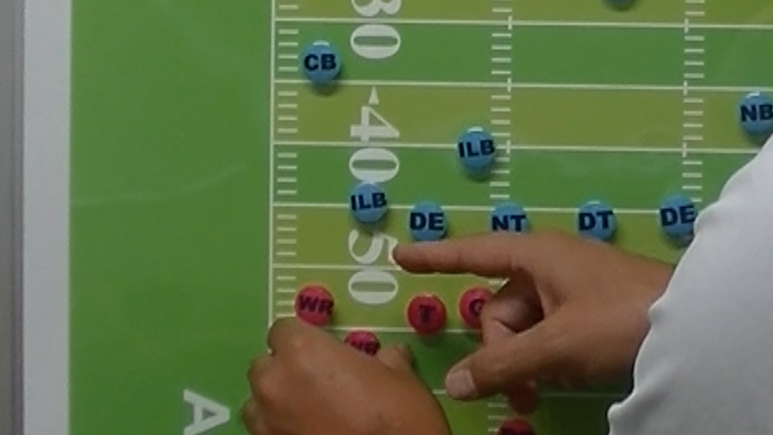
Therefore, during the first 10 plays, OF really makes those plays and see if the opponent makes the same adjustments as the scouting.
As I also did that, some Coaches make a Script for each situation. For 1st down, some plays like this. For 2nd down long, some plays like this. And for 3rd down short, middle, and long, respectively, they decide that if DF comes in this way, OF will make this play, and if DF comes in another way, OF will make this play, and so on.
Then, when OF advance close to the Goal line, called Red zone, they will do these plays, and Coaches compile a list of such plays before the game, and call the appropriate play in each situation automatically. Even if Coaches think during the game, they do not have enough time.
In addition, Coaches are often upset and confused during the game, so there is a high possibility that they will not be able to make a good decision. Therefore, I think many Coaches would prefer to decide what to do before the game, and then scratch the plays that were actually not effective.
Part 9-2: How to enter the match
In American Football, scoring first is advantageous. If a team can start the game with a lead by scoring even 3 points first anyway, this will give them a psychological advantage. To do so, Coaches have the idea of putting their best plays in the Script, showing their opponents only the formations they are willing to show without overdoing, and eventually kicking at least a Field Goal (FG).
Or, if the opponent is extremely strong, some teams self-scout the plays they have been playing and then try to confuse the opponent’s Defense (DF) by doing plays completely different from their previous Offensive (OF) tendencies in the first 10 plays. Underdog teams sometimes try to score the points first while the opponent is confused.
*Underdog: Team which is unlikely to win because of the difference in ability.

I think that when OF can score the points first, it generally means that they can carry the ball forward properly.
When OF starts their attack from this point where the return is over, and if they are able to move the ball forward properly, it gives them confidence that their team can gain again today, and Coach can think positively that today’s plan is not bad, and also, players can move as much as they want when they are in the lead.
If DF makes some mistakes and allows the opponent to have a lead, the players become aware that they cannot make mistakes any more, and their play becomes atrophic, so I think it is a great advantage to have a lead.
Q: How many plays does Coaches prepare?
Usually, they have at least 100 plays all together. But some team might have only 30 plays. But there are good and bad things also, and if some team prepares fewer plays, they can improve the perfection of each play in the same practice time.
Then, this is the same or me, Coach would think that it would be more effective to prepare few plays and to perfect each one, because the good plays will be used for 3 or 4 times in a game. In that case, Coach will also think to practice that plays that they are good at and that they use 3 or 4 times in a game as much as possible. As OF, it is often effective in a game with 50 perfect plays than to prepare 100 plays.
However, if OF prepares too few plays, DF will come to stop them. DF may see the tendency of OF easily, so I think the key is to find the good balance.
If a team has 1 player with high ability, they can collect the ball to that player and this player will gain 5 or 10 yards each time, but many teams have players who are not bad but not outstandingly talented, and in that case, teams which have plays without mistakes, they used to play many times and perform their ability fully are strong.
This makes it easier for OF players to really focus because there is less uncertainty in their play.
Part 9-3: Restriction on Offense (OF) / Time Management
Restriction on Offense (OF)
The advantage of OF is that OF can decide when to start a play, and also OF can naturally decide what play, i.e., what formation to use, and what plays to choose. In response, Defense (DF) has to constantly make adjustments.
If it is too much in favor of OF, the games will always be high-scoring and DF will not be able to compete unless DF makes some big plays, making the games very boring as a show, therefore, there is a rule, for example, that there must be 7 OF players on the Scrimmage line. There are 7 OF players in a row like this, and only these 2 players at both ends of the line can catch the Pass.
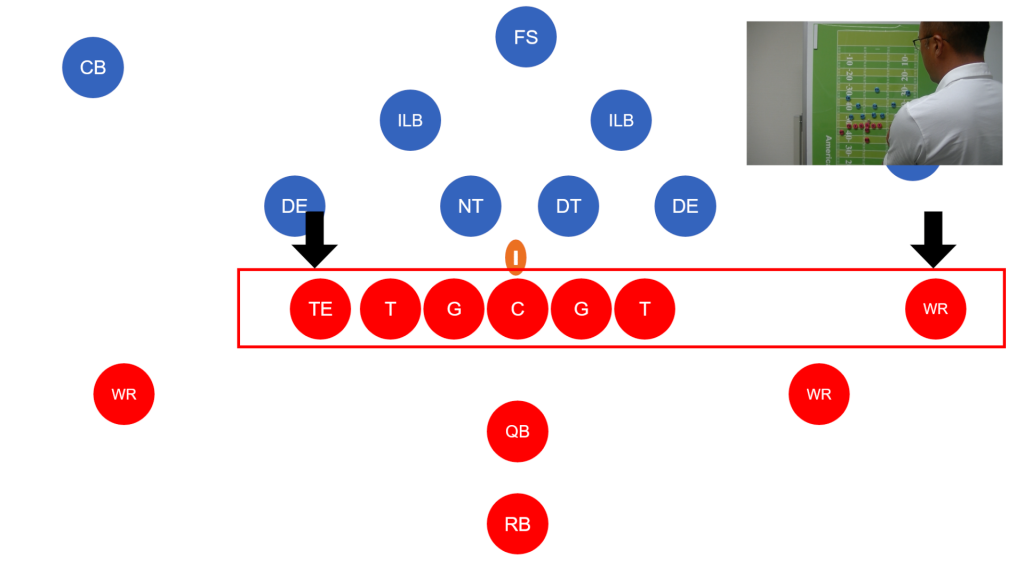
In other words, with regard to these Offensive Linemen (OL), these 5 players from Tackle (T) to T, there is basically no play where they are designed to have the ball, and thus OL is said to be the players who cannot touch the ball.
And, only players other than these 7 players on Scrimmage line, i.e., these 4 players, can make the motion. There are 6 players who can catch Pass, including Quarterback (QB), as OL cannot catch Pass. However, the number of players who can make the motion is further reduced to only 4, while QB can also make motion and catch the Pass. With these restrictions on OF, DF can, for example, play a DF that covers the are around the Scrimmage line, or increase the number of players in the Deep zone to defend the Pass. It also makes it easier for DF to defend in various ways.
If DF tries to cover this wide area with their 11 players, it is very tough for DF, therefore, to make it possible, there are restrictions on OF such as: there must be 7 players on Scrimmage line, only these 4 players can make motions, only these 6 players can catch Pass, and so on, and this is a characteristic of American Football, where these restrictions are given to OF a well as the advantage.
-1024x576.png)
Time Management
I think the biggest difference between Baseball and American Football is that American Football has the limited duration of game. In Baseball, there are 9 innings, and in American Football, there is a limit duration of game, so, teams sometimes decide when they have to hurry.
For example, if there is a point difference that requires 4 series in 3rd Quarter (Q), Coaches will think about scoring points early, using as little time as possible, and if there is a point difference that requires more than 2 series in 4th Q, they will also think about time. So, of course, they start thinking about how to use that 25 or 40 seconds between the plays.
The other thing is how to use timeouts. How they use their timeouts, i.e., to save them for later or to use timeouts early to leave time. Furthermore, in NFL, there are Two Minutes Warnings by which the Game clock automatically stops, so as a Coach, they think they have about 4 chances to stop time as an image.
*Two Minutes Warning: Time out automatically applied when a play stops after 2 minutes or less before the end of the 2nd and 4th Quarter.
I think Head Coach (HC) will have the discretion to decide how and when to use those 4 chances. Those who are called great Coaches are also good at time management, clock management, and they never make mistakes, and do not take timeouts in improper timing. I think that is why they are called great Coaches.
This is another feature of American Football that is not found in other sports. There are not many sports in which time stops and moves, so I think this is an interesting aspect of American Football.
Share this content:
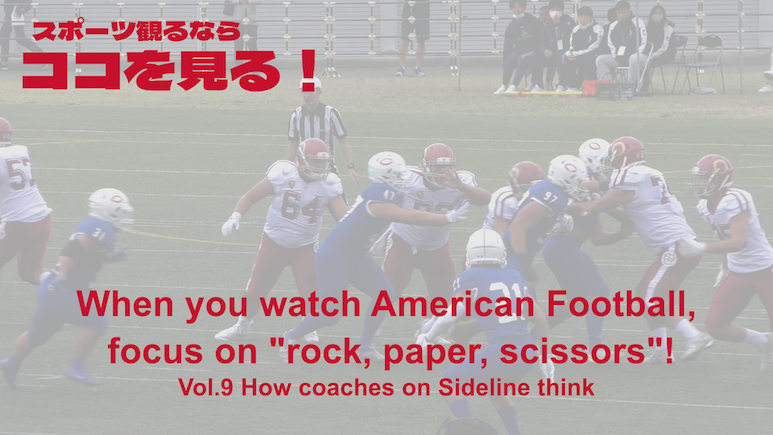
コメントを残す